Our dive guide is raising his hand, his little finger separated and slightly curved. Clearly a signal for pygmy seahorses. But his following signals cannot be interpreted by anyone. Dolfye is raising both his hand directly in front of our masks, all fingers extended. He is indicating the number 10. Or 20? Or 30? His eyes wander towards a small gorgonia of the genus Muricella, not bigger than a tennis racket. We don’t have to search for long: Hippocampus bargibanti, many divers’ favourite, is all around us. Pygmy seahorses wherever you look. Though these small creatures usually live in small groups, they present themselves in exorbitantly high numbers. During the short time frame of 30 mins. that we have left, we can count 28 tiny seahorses. 28! We are absolutely stunned. And if the coral reefs of the western Pacific Ocean from the Philippines, Indonesia and New Guinea to the Great Barrier Reef are the home of these dwarf like creatures, we have surely found their nursery and the home of many more bizarre creatures.
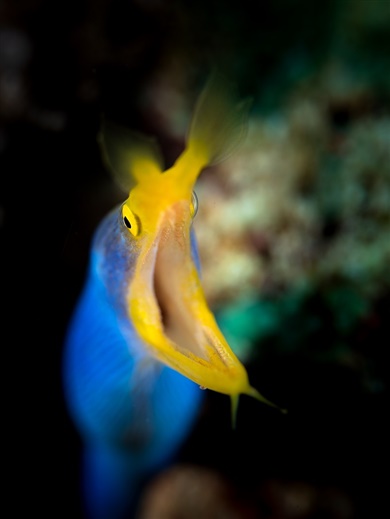 |
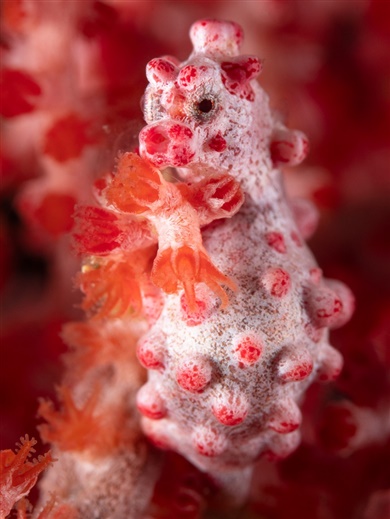 |
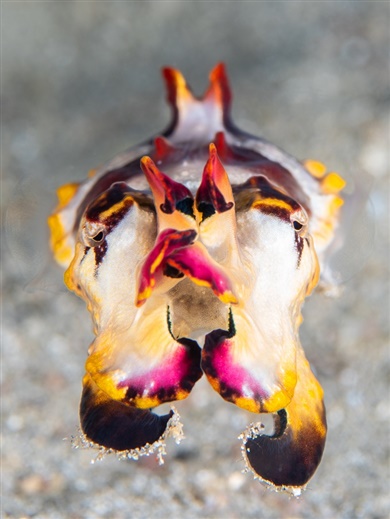 |
David Benz • OM-D E-M1 • M.Zuiko Digital 60mm F2.8 MACRO
• PT-EP11 • PPO-EP01 • 2 x UFL-3
In the northern part of Sulawesi, we are ready for some island time. On Bangka, we find a touristic treasure island that has not really been discovered yet. It can be found just a few kilometres from Manado at the northernmost eastern corner of Sulawesi. With its size of just around 48 km2 the island represents one of the most impressive underwater areas of Indonesia. Our journey leads us towards the coral triangle around Bangka, Lembeh and Bunaken. And Bangka’s dive spots, as part of the Bunaken National Park, are most certainly some of the most beautiful dive spots in South East Asia. We are welcomed by Steve Radics, owner of the Sea Souls Dive Resort who, together with his partners Carolin Krause and Dolfye Bawole, runs this magical place and absolute diver’s paradise since 2015. We can instantly feel the passion the staff has put into this wonderful small hotel and dive school.
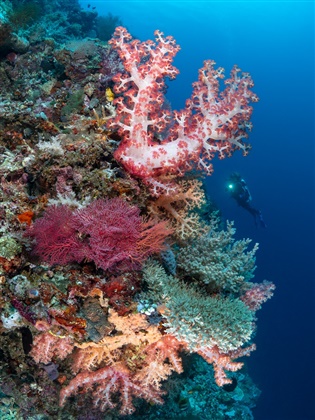 |
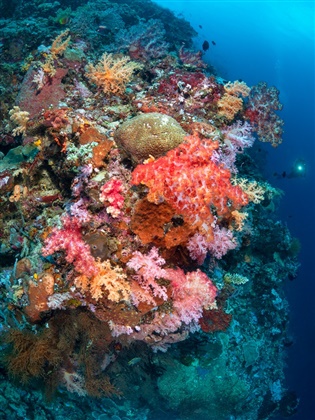 |
David Benz • E-M1 Mark II • M.Zuiko Digital ED 8mm F1.8 Fisheye PRO
• PT-EP14 • PPO-EP02 • 2 x UFL-3
After a stress-free journey and a tiny jetlag, we move into our bungalow, just a few steps away from the dive spots yet to be discovered and a deep blue sea waiting for us to explore its depth. After a detailed introduction to the daily diving at this place and a short briefing, our time has finally come. We submerge! A soft current takes our hand and takes us on an iridescent journey alongside the edge of the reef. We are hardly completely underwater before we catch sight of a colourfully brindled, bright Pfeffer's flamboyant cuttlefish. Proudly, it is strolling around on the sandy ground in the search for food. Only a few meters away, a ribbon eel is dancing in front of our underwater camera in its blue and yellow dress. Meanwhile, a tiny candy crab, merely about 1 cm small, marks the highlight of our maritime expedition. Pink like a candy, the tiny creature is posing on its flower-coral as if it were directly from a candy store. In the beaming sunlight we dive on through an oasis of life, intoxicated by a sea of colours and shapes.
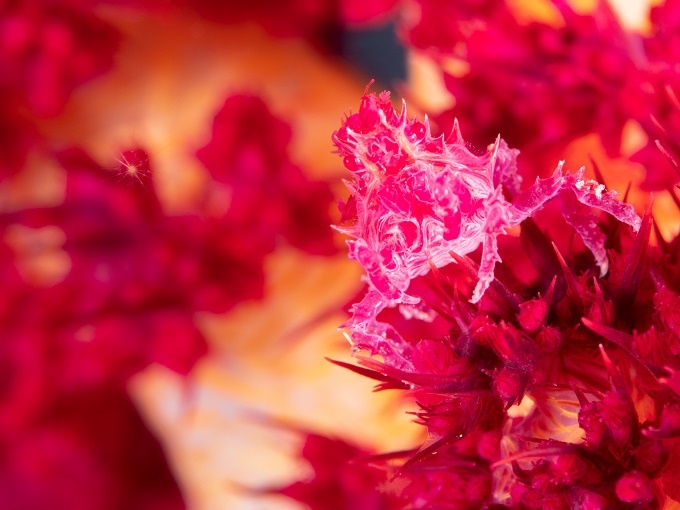
David Benz • OM-D E-M1 • M.Zuiko Digital ED 60mm F2.8 MACRO
• PT-EP11 • PPO-EP01 • 2 x UFL-3
Though you might know many of the creatures here from other regions, the area around Pulau Bangka offers an exceptional underwater nature. The healthy reefs provide a home for countless critters and most of the big names of the tropical reefs. And the best thing: all the important dive spots around our resort and the neighbouring islands are just around the corner. You may also enjoy a trip to Lembeh Strait which is not far away. For us, however, Bangka’s nearby muck-diving spots are more than enough. Tanjung Sipi is as bleak and lifeless as the grotesque width of the popular macro paradise Lembeh. But only at first glance. A closer look reveals that this place provides a home for some extraordinarily bizarre organisms. Free the stage for a colony of ghost crabs, dreadful tiny beasts that can be found en masse at this place. We dive even further, deep into the sandy wasteland of Tanjung Sipi. Behind a teeny ledge we encounter a hairy frogfish, the probably weirdest representative of the frogfish genus. Motionless, rooted to the spot, it is waiting for its next meal and is only revealed by its bright eyes observing us very closely. Passing by some odd microorganisms we are floating above a muddy sandy desert. And just before we are out of oxygen, our dive guide Dolfye presents us a small shrimp literally dancing on the face of an eel. We return to our resort with happy faces and full memory cards
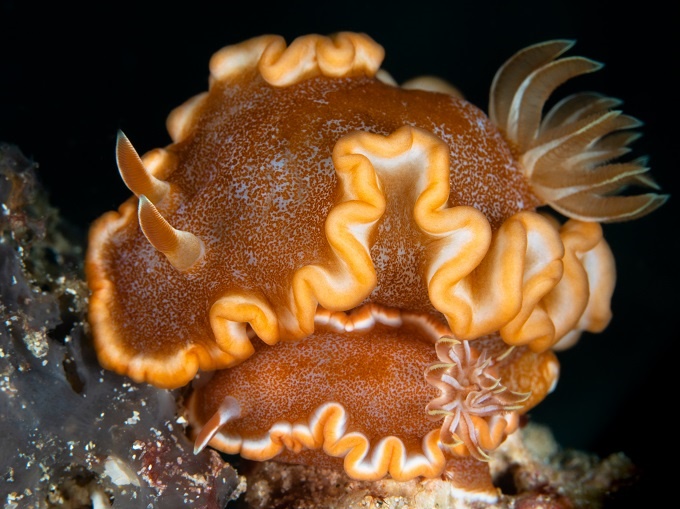
David Benz • OM-D E-M1 • M.Zuiko Digital 60mm F2.8 MACRO
• PT-EP11 • PPO-EP01 • 2 x UFL-3
In the afternoon, we finally jump into the water again, performing our best backwards rolls. The view is crystal clear, our objects of desire right in front of our masks. “Bear in mind that some critters are teeny tiny – you can hardly see them.” Steve’s words in mind we encounter a frogfish, no bigger than a pinhead, sparkling red in the sunlight like a tiny ruby. On a small fan-seaweed we catch sight of a truly miniscule leaf sheep nudibranch – a rather exceptional sighting and an absolute superstar for underwater photographers. With its size of just between 2 to 7 millimeters, it presents a rather rare and very challenging photo objective. So, you rather enjoy this creature with calm hands and a lot of patience. For the next day, our dive guide Amang promises two very special creatures: The Hippocampus severnsi, which was discovered at Milne Bay Province in Papua New Guinea, and the Pontohi pygmy seahorse, which can be found in the eastern part of Indonesia. These two are even smaller than a thumbnail and are thus very hard to make out, at least if you’re not trained for it. But thanks to the trained eye of our guide we first find the Pontohi pygmy seahorse and finally the Severn’s pygmy seahorse at the Sahora dive spot in Tanjung Toto, in the east of Bangka. Well camouflaged and with their tails locked firmly around their gorgonias, they brave any adversities and are smoothly swaying around in the current. Without doubt, small creatures are the stars of the dive spots around Bangka and make the place a magical area for underwater photographers, critter lovers and macro fetishists.
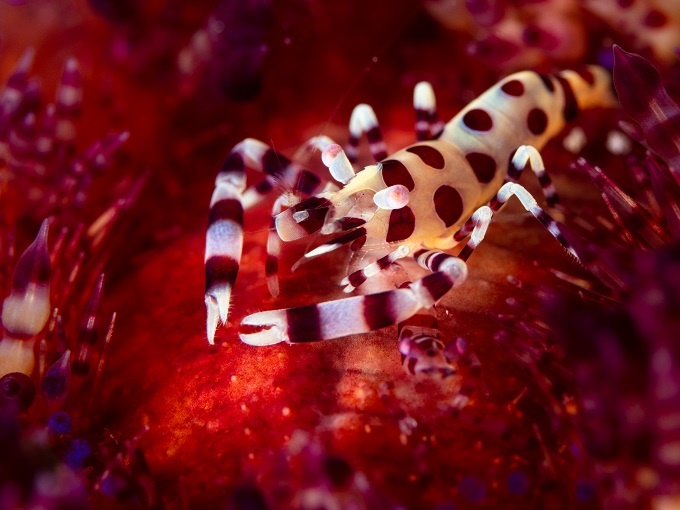
David Benz • OM-D E-M1 • M.Zuiko Digital 60mm F2.8 MACRO
• PT-EP11 • PPO-EP01 • 2 x UFL-3
If, after an overdose of macro dives or a week at Lembeh, you’re craving for some open waters, big fish and colourful coral gardens, you will find just the right place for you here at Bangka. The dive spots here could hardly be any more different from one another. Leaving the tiny nudibranchs, we are diving on through light-flooded canyons. In Pulau Talsei, we dive through rock formations sloping 30 meters deep and discover spectacular underwater caves. Intoxicated by all the colours, we are floating above a carpet of corals. Underneath us, it’s shining pink, orange, red and yellow. We are so sucked in that we nearly miss the passing eagle rays and the whitetip reef sharks. The coral gardens around Batu Gosoh and Aer Banua are healthy and – thanks to just a little tourism – seem rather virgin. Dolfye is happy to be able to offer his guests such a variety – and that’s what we experience throughout our journey. Besides frogfish, nudibranchs and many most bizarre creatures, this place is the home of a rather large mermaid. In the crystal-clear water, we discover the silhouette of a grown dugong. Calmly, the massive siren dives through our small group and finally disappears into the depth of the ocean. We continue our journey alongside lush seagrass beds, the sandy ground seems full of small blue-spotted rays that are shooting from one direction to the next, like playing children
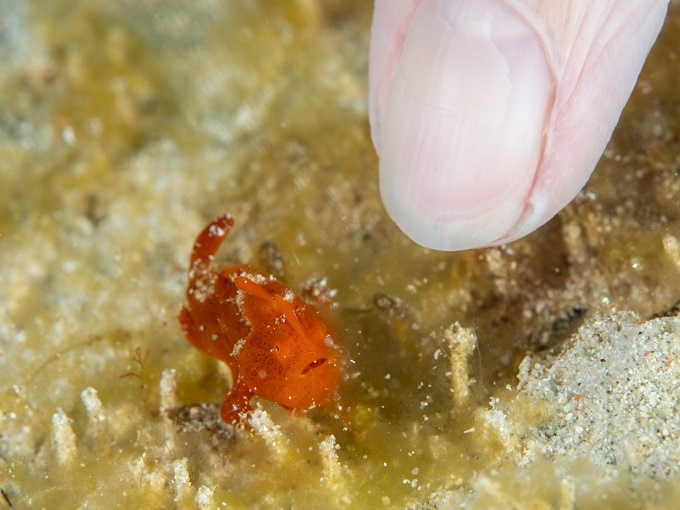
David Benz • OM-D E-M1 • M.Zuiko Digital 60mm F2.8 MACRO
• PT-EP11 • PPO-EP01 • 2 x UFL-3
Wherever you go at this magical place, you will experience diving at its best and purest form. Tourism? Not really existent! Especially no mass tourism. Unlike on Bali or Lombok, places hugely suffering from too much tourism, Bangka only offers six small accommodation facilities for divers. Our hosts run their place with an absolute passion for diving and natural living and you can feel this passion everywhere. It is a place of peace and calm and the only thing louder than nature might be some children playing at the beach and enjoying the last sunrays of the day. Cheerful and jovial – that’s how we got to know Bangka’s nursery.
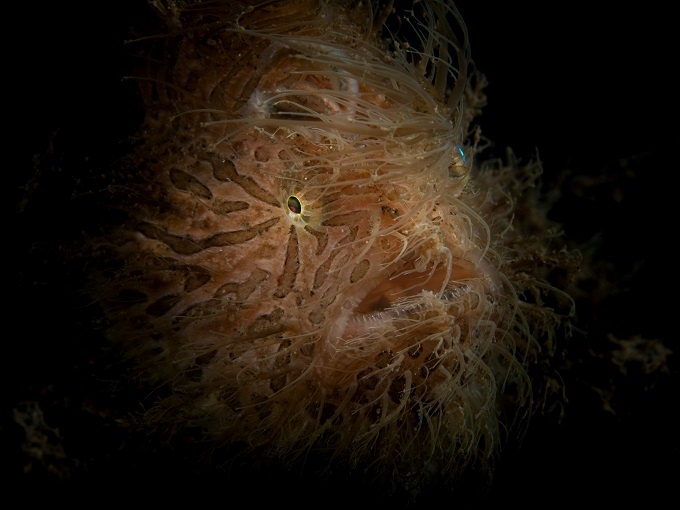
David Benz • OM-D E-M1 • M.Zuiko Digital 60mm F2.8 MACRO
• PT-EP11 • PPO-EP01 • 2 x UFL-3
Comments
Show more comments (7)